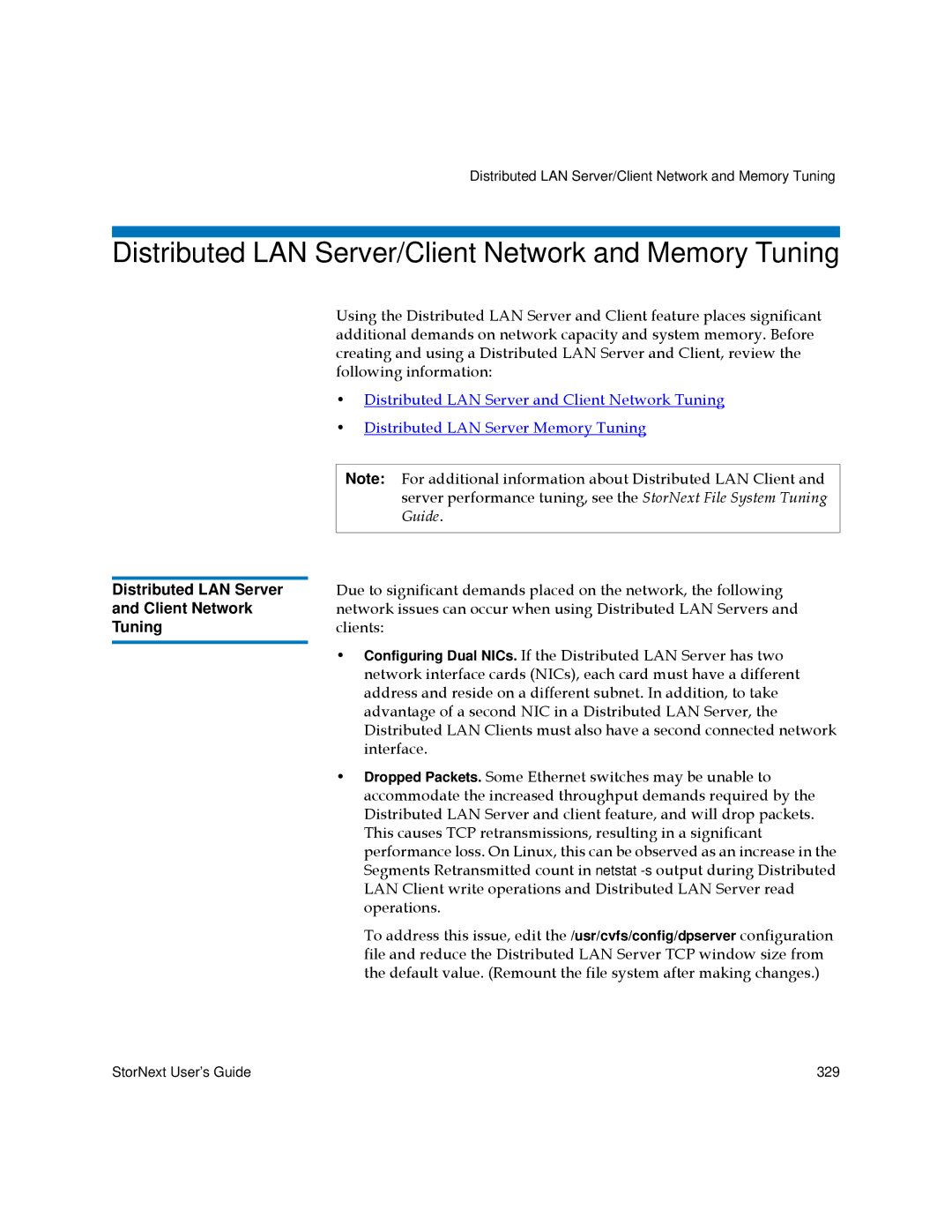
Distributed LAN Server/Client Network and Memory Tuning
Distributed LAN Server/Client Network and Memory Tuning
Using the Distributed LAN Server and Client feature places significant additional demands on network capacity and system memory. Before creating and using a Distributed LAN Server and Client, review the following information:
•Distributed LAN Server and Client Network Tuning
•Distributed LAN Server Memory Tuning
Note: For additional information about Distributed LAN Client and server performance tuning, see the StorNext File System Tuning Guide.
Distributed LAN Server | Due to significant demands placed on the network, the following |
and Client Network | network issues can occur when using Distributed LAN Servers and |
Tuning | clients: |
| • Configuring Dual NICs. If the Distributed LAN Server has two |
| |
| network interface cards (NICs), each card must have a different |
| address and reside on a different subnet. In addition, to take |
| advantage of a second NIC in a Distributed LAN Server, the |
| Distributed LAN Clients must also have a second connected network |
| interface. |
| • Dropped Packets. Some Ethernet switches may be unable to |
| accommodate the increased throughput demands required by the |
| Distributed LAN Server and client feature, and will drop packets. |
| This causes TCP retransmissions, resulting in a significant |
| performance loss. On Linux, this can be observed as an increase in the |
| Segments Retransmitted count in netstat |
| LAN Client write operations and Distributed LAN Server read |
| operations. |
| To address this issue, edit the /usr/cvfs/config/dpserver configuration |
| file and reduce the Distributed LAN Server TCP window size from |
| the default value. (Remount the file system after making changes.) |
StorNext User’s Guide | 329 |
